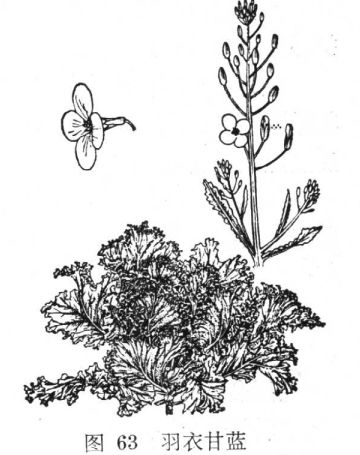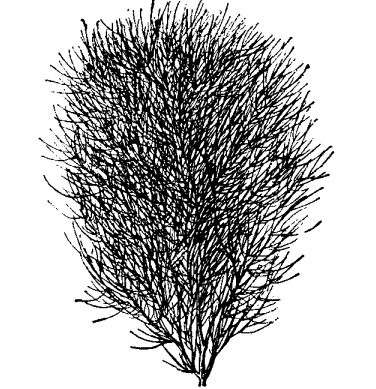Cultivation and planting techniques of mallow
[alias] small hollyhock, chessboard flower, potato banana flower.
Malvaceae, Malvaceae.
[morphology] biennial herbs, plant height 60 Mel 100 cm, stem erect, branched, hirsute. Leaves alternate, cordate-orbicular or reniform, 7-13 cm in diameter, margin with obtuse teeth, veins palmate, petiole 8-18 cm long. The flower diameter is 2.5ml 4cm, with 5 petals, the apex is engraved, and the purplish red has light vertical stripes. Several clusters are born in leaf axils. The florescence is from May to June. Seeds flattened, round-reniform.
[varieties, forms and varieties] mallow: the plant is higher, up to 120 cm, the leaf shape is flatter, and the lobes are more obtuse. The flowers are large, purplish red and have white flowers. (this article is from the Encyclopedia of Agriculture.
[Origin and distribution] Origin of Europe and sub-temperate zone.
[habit] hardy, self-sowing, regardless of soil.
[reproduction] it was sown in the open field seedbed at the beginning of September.
[cultivation] the seedlings grew fast and were planted in the garden at the beginning of November after one transplantation. the plant spacing was 50-60 cm, and the management was easy.

[seed collection] when most of the fruits on the plant are yellow and ripe, the whole plant can be cut, dried and threshed. Ripe fruits can also be picked one after another.
[application] Flowers and leaves can be used as medicine, and they are slippery agents rich in mucus. It can be used as background greening material or gap greening.
Musk mallow: perennial herbs with a height of 50 cm. Lower leaves round-reniform, upper leaves 5-lobed, lobes again 1-2-lobed or divided into striate lobules. The flower diameter is 4murmur5 cm, born in the upper leaf axil of the branch, rose-red, with a variety of white flowers. Originally from Europe.
How to grow okra? Key points of cultivation techniques of okra
Picture: okra planting
[FAQ] how to grow okra? Key points of cultivation techniques of okra
[expert answers]
1. Planting time: from early April to late August, the seeds can be planted in the open field, and the tender fruits can be harvested in the same year; if the seedlings are covered in large and small sheds, the seeds can be sown in early March and the tender fruits can be harvested ahead of time.
2. Soil preparation and fertilization: okra has strong adaptability to soil, but in order to obtain high yield, it is necessary to choose fields with fertile soil, loose soil, convenient drainage and irrigation and sufficient light, and avoid stubble with cotton and other Malvaceae crops. Ploughing the soil before sowing or planting, 1.4 m continuous ditch for bed, 1 m wide, about 40 cm wide, 25 mi 30 cm deep. In the middle of the border, apply 2000000 kg of rotten barnyard manure, 50 kg of calcium, magnesium and phosphorus, and 20 kg of nitrogen, phosphorus and potassium, mix well with the soil, and then flatten the border surface.
3. Sowing: direct seeding, after breaking frost, sowing 2 rows in each row, the distance between each hole is 45ml 50cm, sowing 3 grains in each hole, and leaving a strong seedling in one hole after emergence. In order to improve the ground temperature and emergence early, plastic film mulching or small arch greenhouse mulching can be used for sowing in early spring.
In the north, two cultivation forms of flat beds or high ridges are adopted, which are sown in the first and middle of May and are not harvested until July.
4. Dig holes to apply base fertilizer
Two rows of holes were dug in each row, with a row spacing of 50 cm × 40 cm with a width of 70 cm, with 2600 nests per mu, and a row spacing of 60 cm × 60 cm with 1700 nests per mu. Apply 200 grams of dry farm fertilizer and 30 grams of nitrogen, phosphorus and potassium compound fertilizer in each hole, and mix it evenly with the soil in the hole (fertilizer can not be concentrated in the sowing hole to prevent burning seedlings).
5. Sowing seeds
Soak the seeds in 20 ℃ ~ 25 ℃ warm water for 12 hours before sowing, then dry them, accelerate germination at 25 ℃ ~ 30 ℃ for 48 hours, wait for half of the seeds to be white, dig holes according to row spacing 80 cm and plant spacing 50 cm, first irrigate bottom water, sow 2 grains per hole, cover soil 2 cm, plant 2000 holes per mu, and the amount of seeds used is about 0.5kg.
Seeds are usually sown from the end of April to the beginning of May. Each hole is triangular sowing 3 seeds, the distance between the seeds is 5 cm, the depth is 2%, after sowing, pour water thoroughly. The seedlings emerged 5-7 days after sowing, and 2 seedlings were preserved in each hole when the seedlings grew to 10 cm high.
6. Field management
The first seedling was carried out when the first true leaf was unfolded, and the sick, disabled and weak seedlings were removed. When the second or third true leaves were unfolded, a strong seedling was left in each hole. After setting the seedlings, ploughing and hoeing should be carried out in time. In the future, weeding should be done frequently, and soil cultivation should be carried out to prevent plant lodging. Okra is a moisture-tolerant plant, the plant is tall and needs more water, so it should be watered once after emergence and setting seedlings, and the soil should be watered frequently during flowering and fruiting period to keep the soil moist, especially the high temperature weather from July to August is the peak period of fruit harvest, and the water demand is large. In addition, it should be combined with watering per mu to apply 15 kg of urea or 500 kg of human feces and urine 3 times in the seedling, fruiting and fruiting period to promote high yield.
Okra plants have developed roots, exuberant growth, fertilizer and water demand, especially during flowering, if there is a lack of water and fertilizer, it will lead to bad results and reduce yield. Topdressing once after setting seedlings, applying 2 grams of nitrogen, phosphorus and potassium compound fertilizer per hole. If there is obvious lack of fertilizer, topdressing should be applied every 10 to 15 days. The amount of fertilizer application depends on the plant size, 5 grams to 10 grams per hole. Irrigation should be increased in the dry season to keep the soil moist.
Hit the side branch. If there is enough water and fertilizer, the axillary buds in the lower part of okra plant are easy to grow into lateral branches, which not only bear bad results, but also easily cause too many branches and leaves of the plant, affecting the normal fruit of the main stem. Therefore, once the side branches appear, the side branches should be cut off in time, and the young side branches can be fried.
[editor's comments] okra seeds and glue have unique health effects, and their nutritional value is very high. It is a popular vegetable in recent years. Many vegetable farmers must want to know whether okra is good or not and how to plant and manage it. The above is the "okra cultivation technology" organized by the first Agricultural Economic Xiaobian for you. This is all for you. I hope it will be helpful to you. See you next article!
Key points of cultivation techniques of hibiscus how to grow hibiscus?
Hibiscus, also known as infinite flowers, desert roses, etc., is a common garden shrub flower; it belongs to Malvaceae, native to eastern Asia, with showy flowers and widely cultivated as an ornamental. So how to plant hibiscus? What are its functions? Next, the editor will introduce to you.
I. planting methods of hibiscus
1. Soil: hibiscus has strong adaptability and lax requirements on soil, and can grow normally in barren gravelly soil or slightly alkaline soil, but it is better in deep, fertile and loose soil.
2. Watering: during the growth of hibiscus, attention should be paid to keeping the soil moist, long-term drought and no rain, irrigation should be paid attention to, and Rain Water should be drained to prevent waterlogging when there is too much.
3. Sunshine: hibiscus likes light and is resistant to semi-shade. During the growth period, you should pay attention to providing sufficient light, but it is not suitable for too strong sunlight.
Second, the function of hibiscus
1. Watch. Hibiscus flowers bloom in summer and autumn, when full of tree flowers, flowers are white and purple, beige, but also light red, scattered, welcome Xia foam day, fluttering in the wind, beautiful, ornamental effect is very good.
2. Purify the air. Hibiscus is called the "natural antidote machine". Ecologists have collected nine kinds of plant leaves with strong anti-pollution ability for analysis, and found that the leaves of hibiscus contain the most chlorine and adhere to the leaves. It is highly resistant to sulfur dioxide, and sulfur dioxide does little harm to the mesophyll cells of hibiscus; the dust retention of hibiscus leaves ranks third among 18 species of plants, so hibiscus is often planted as a helper of environmental protection.
The above is the introduction of hibiscus cultivation techniques provided by the succulent flower bed. I hope it can be helpful to you. Welcome to continue to pay attention to the succulent flower bed and learn more about the technical points of flower cultivation.
- Prev

Cultivation and planting techniques of kale
[alias] leaf peony, peony, cauliflower. Cruciferae, cabbage. [morphology] biennial overwintering herbs, plant height 30 Mel 40 cm (even inflorescences up to 120 cm), erect unbranched, stem base Lignification. Leaf moment round-Obovate, broad, up to 20 cm long, covered with frost
- Next

Cultivation and planting techniques of Kochia mandshurica
[alias] broomgrass, green broom. Chenopodiaceae, Chenopodiaceae. [morphology] an annual erect herb, 50ml / 100cm tall, with many and dense branches, pubescent. Leaves alternate, strip-shaped, extremely narrow, 3-5 cm long, with a large number of leaves; perianth red and brownish red. Flowers small, bisexual or female
Related
- Fuxing push coffee new agricultural production and marketing class: lack of small-scale processing plants
- Jujube rice field leisure farm deep ploughing Yilan for five years to create a space for organic food and play
- Nongyu Farm-A trial of organic papaya for brave women with advanced technology
- Four points for attention in the prevention and control of diseases and insect pests of edible fungi
- How to add nutrient solution to Edible Fungi
- Is there any good way to control edible fungus mites?
- Open Inoculation Technology of Edible Fungi
- Is there any clever way to use fertilizer for edible fungus in winter?
- What agents are used to kill the pathogens of edible fungi in the mushroom shed?
- Rapid drying of Edible Fungi

